Are You A Vanguard? Applications Now Open
This is your first of three free stories this month. Become a free or sustaining member to read unlimited articles, webinars and ebooks.
Become A MemberOn a rundown block of Oakland’s San Pablo Avenue, a block from the freeway overpass and just down the street from a couple of single-room occupancy hotels, is a well-worn community space called the Holdout. Its walls are plastered with posters calling for social equity, demanding justice in the case of Trayvon Martin, proclaiming that black is beautiful. There are computers where people can do research or look for jobs, a small store selling books on history and community, and a bicycle workshop in the basement. The spirit of the 1960s and ’70s — the era when the Black Panthers arose from this city and took the nation’s consciousness by storm — is strong here.
On this summer evening, the Holdout’s back room is filled with a group of about two-dozen people, old and young, of all different colors. They perch on frayed couches and wobbly chairs, their faces expectant, waiting for something to happen.
Then it does. There’s a loud bang. The back door, leading to an outdoor space where a Narcotics Anonymous group had met earlier, flies open. A man bursts through. He’s wearing a nondescript T-shirt with a dark stain seeping down the front. He staggers and falls as if he’s been shot.
He hasn’t. This is just a reenactment, part of a trauma-response training program by People’s Community Medics, a group founded by Oakland natives Sharena Thomas and Lesley Phillips. But it echoes a scene that plays out on the city’s streets nearly every day. Seeing a man fall to the ground with a bullet in his chest is not, for many Oaklanders, a theoretical proposition. In 2011, 1,594 people were shot in this city of 400,000 — most of them young, most of them black, and most of them male.
An investigation in the San Francisco Chronicle this summer found that over the past 10 years, nearly the same number of black men and boys in Oakland were the victims of homicide (787) as graduated from high school with the qualifications to attend a California state school (802). And on a single weekend this past August, 12 people were shot in less than 24 hours, including four in the middle of the day on Telegraph Avenue just a few blocks from City Hall, and not much farther from the Holdout.
The sheer amount of violence can easily overwhelm the system. Oakland policy is that EMT crews can’t start helping an injured victim until police have arrived and secured the scene, but in this sprawling, resource-strapped city, slow police response times are endemic. A recent investigation by Bay Area NBC revealed confounding anomalies with the dispatching system used by Alameda County, where Oakland is located. The private contractor responsible for the system was allegedly triaging calls in such a way that in some cases, people who were drunk or dizzy were given higher priority than those who had been shot.
Thomas and Phillips want to teach people what to do if they witness an emergency. “We’re not trying to replace the EMTs,” Thomas says. “We’re just trying to provide a cushion.”
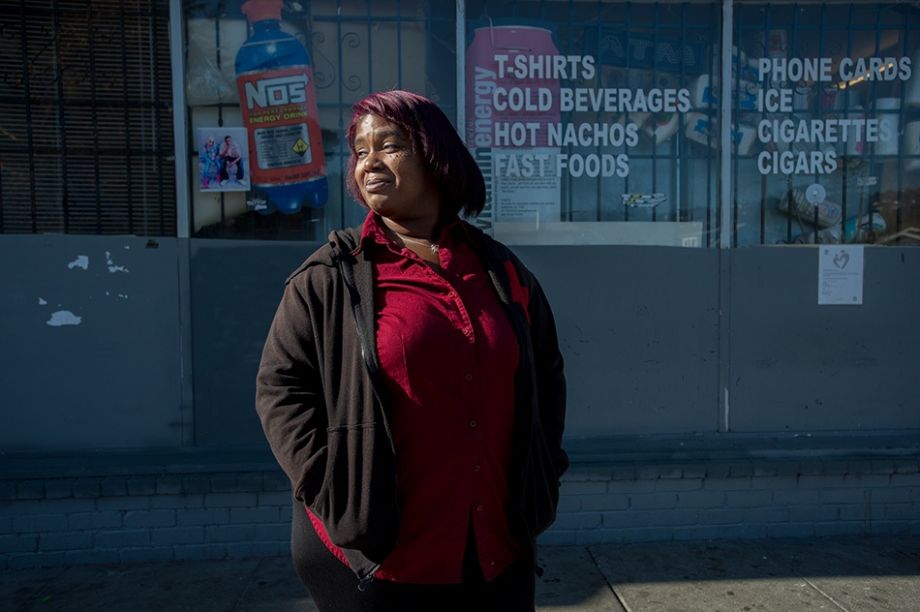
Sharena Thomas (pictured) and Lesley Phillips started People’s Community Medics out of frustration with the long wait time for ambulances after shootings in their community.
Hosted by the Black Riders Liberation Party, a “revolutionary” descendant of the Oakland-born Black Panther Party, the evening’s training is a sort of 101 in emergency medicine. The lesson is dramatic and physical. Aided by members of the audience, Thomas and Phillips grab hold of the fallen man and place him in “the rescue position” — lying on his left side. They instruct a volunteer in how to take a couple of gauze pads and apply pressure to the man’s chest and back, where the entrance and exit wounds for a real gunshot would be.
The person applying pressure is tentative. Thomas grabs her hands end presses more firmly against the man’s torso. “You really have to press hard,” she says.
Later, the two women pass out emergency kits to carry in a backpack or purse, each one containing gauze pads, latex gloves and a short page of instructions. They advise women in the audience that if they find themselves at the scene of an emergency without the kits, tampons and sanitary pads make a good substitute. A tampon, Thomas says, can be plugged right into a bullet wound. “If it happens around us, we can respond,” she says. “We do the best we can with what we have.”
If an exorbitant cost of living is the defining issue for San Francisco across the bay, public safety is it for Oakland. And the two feed off of each other. As housing prices skyrocket in San Francisco, more and more affluent people, most of them white, move east across the bay, transforming historically African-American neighborhoods, pushing up rents and putting new pressures on already-strained public safety systems.
The newcomers have come to sleek condos that have sprung up downtown, and into now-trendy older neighborhoods like Temescal, where there’s a thriving community of local entrepreneurs who craft and sell the stuff of modern urban affluence: artisanal coffee, hand-hammered brass necklaces, locally produced honey. Oakland has always had its upscale sections, such as Rockridge, mostly in the hills. But this is different, and it has brought tension. When I ask Phillips about the city’s changing population, she refers to the people moving in as “invaders.”
The rise of gentrified Oakland has not produced solutions for the deep problems that have vexed this city for generations: entrenched poverty, racial and class division, a failing public education system, persistent budget woes and, most of all, the feeling that the streets of Oakland aren’t safe. In 2012, it had the highest number of robberies per capita in the nation for a city its size: 10.9 per 1,000 residents. (Cleveland placed second, with 8.3 per 1,000.) And 2013 is on track to continue an upward trend that has been ongoing since 2010. If the rest of the year plays out this way, the robbery rate will have increased 24 percent over 2012, and a whopping 82 percent since 2010.
On an online comment board about the increase in robberies, one Oaklander connected a decline in public safety to the widening wealth disparity in the region. “This city is becoming more dangerous as the rift between poorer people and richer people becomes higher,” the commenter wrote. “And although I’m white and I’m a software engineer, I can’t afford to live in San Francisco either.”
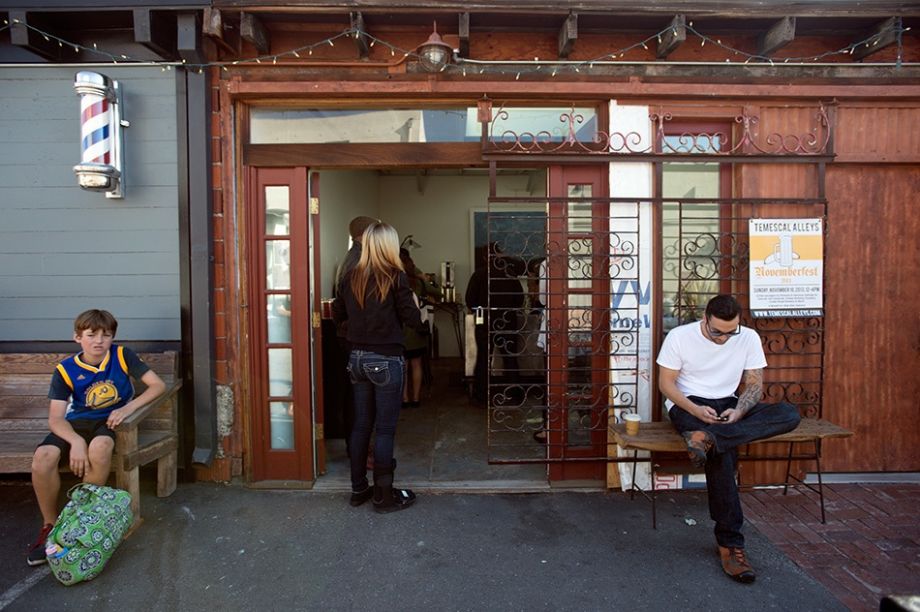
As housing prices skyrocket in San Francisco, more and more affluent people are moving across the bay to Oakland.
This fall, armed robbers targeted a “casual carpool” line, where commuters line up each morning to catch rides near a highway on-ramp in affluent Rockridge. Following the incident, neighborhood residents went online to raise funds for an unarmed security patrol. The idea of crowd-funded cops gave fodder to those who fear an ever-more divided Oakland, where increasing numbers of wealthy people live with one set of services and concerns while a marginalized majority are left to tend to their own.
“People are moving here with the expectation that Oakland is going to be what they came from, and it’s not,” says Esperanza Tervalon-Daumont, executive director of the non-profit Oakland Rising, whose mission is to organize and mobilize voters of the city’s flatlands neighborhoods. “There’s a subtext of racism, like it’s our fault and we are the problem.”
“We all agree about stopping crime,” she adds. “More police is the easy answer, but I don’t think it’s going to be the nuanced response that will lift up all the people here. Crime is not born of crime — crime is born of circumstance. We’re not going to police our way out of poverty.”
Tervalon-Daumont and many others say the lack of solid working-class jobs is at the heart of the problem. Despite an influx of well-heeled residents and the presence of a few tech companies, such as Pandora, the free market has failed to work its vaunted magic. All boats are not rising with this tide, and very few people in Oakland — rich or poor — feel like the city functions as it should. In a recent poll, only 27 percent of voters said they feel like Oakland is on the right track.
“I think I live in two different Oaklands,” says Tervalon-Daumont, echoing a certain “Tale of Two Cities” narrative that has played out elsewhere. Her family has been in Oakland for generations, and now she is watching its uneasy transformation with concern. “There’s the Oakland I live in and grew up in,” she says. “Life here is hard. I would characterize it as deep community — we’re not just neighbors, we are family. Then there is the Oakland I work in: carefree, light, really young, professional, a little superficial. They’re definitely melding. I think the challenge is going to be, what does the compromise look like?”
That compromise must be negotiated soon, if Oakland wants to keep its population and economy growing and start to heal some of the city’s painful divisions. Mayor Jean Quan knows this as well as anyone. Just a few blocks from her home in the Oakland Hills, residents have hired private security guards to patrol the neighborhood. The impetus was a series of daytime burglaries, including one in which a thief tried to break into a house where two children were inside. Police didn’t respond until 10 hours after the incident was called in.
“This is a wonderful place to live,” resident Jonathan Klein told the San Francisco Chronicle after helping to hire the private patrols – with the encouragement of the OPD. “I have two kids who go to Oakland public schools, and we love it here. I don’t want to move to [nearby suburb] Lafayette, but given that Oakland police cannot defend us, we couldn’t just sit there anymore and do nothing.”
Whatever else gentrification might mean for Oakland, it has not meant increased safety. And for many natives like Phillips, Thomas and the crowd at the Holdout, the city feels not only unsafe but also more and more unequal. For these people, living in a more affluent city hasn’t meant living in a better city. Being the next hipster haven, after all, doesn’t matter much when you’re just trying to survive.
Next year, Oaklanders will vote for their next mayor. Quan’s poll numbers are dismal, but she has announced plans to run again, and the opposition is only now taking shape, with no one contender yet dominating the challenge to her hold on office. Will the 2014 mayoral election provide a new sense of leadership for a city that badly needs it, or will it fizzle out into a tepid acceptance of a troubled status quo?
Oakland would seem to have every advantage a city could want. Its climate is sunny and temperate. It encompasses miles of waterfront on one of the world’s great harbors and gorgeous hills with sweeping views of San Francisco Bay. In the earliest years of European settlement, an abundant supply of timber, including huge stands of redwoods, fed the sawmills that turned out the boards that built the towns of a place white men called California.
Things went very well for Oakland for a very long time. Some serious political wrangling helped it beat out San Francisco as terminus for the transcontinental railroad in the 19th century, and it remains an important freight rail destination today. During World War II it was a major shipbuilding and manufacturing center, and a boom of industrial jobs attracted people of all different ethnic backgrounds from all over the country. It became one of the main destinations of the Great Migration and a stronghold for union activists.
Today, the city still boasts the nation’s fifth-busiest container port. It is one of the most ethnically diverse cities in the country, with vibrant Latino, Asian, African-American and white populations. And these days, it is part of one of the nation’s most economically prosperous regions.
Yet the city has struggled for decades to attain financial stability. “We have an ineffective government,” says Amanda Brown-Stevens, an Oakland resident for 11 years and a concerned observer of the political scene. “The fact that Oakland has so many problems — you really have to have a dysfunctional city.”
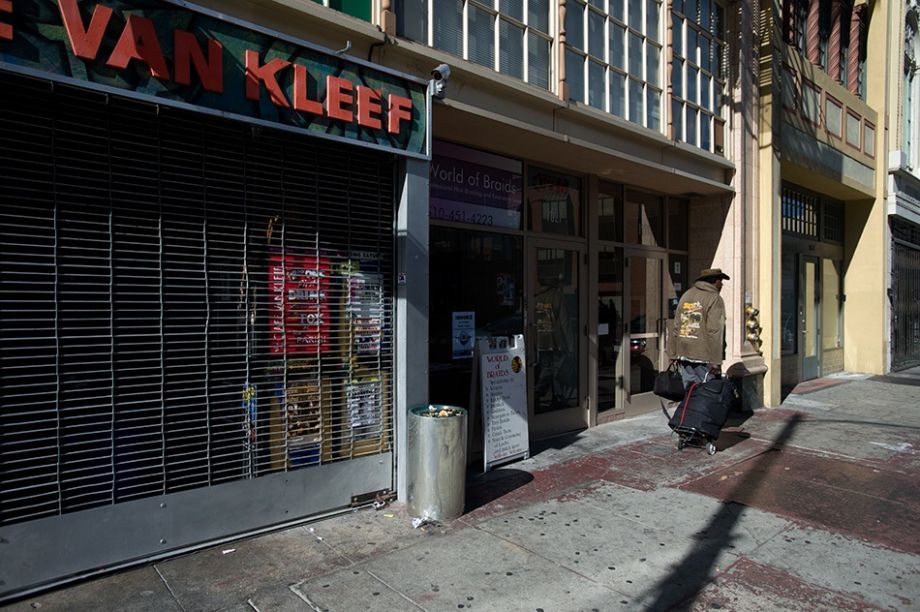
On a single weekend this past August, 12 people were shot in less than 24 hours, including four in the middle of the day on Telegraph Avenue just a few blocks from City Hall.
How Oakland got to this point is a long story, one that pivots on some of the same patterns of deindustrialization and suburban flight that hobbled many U.S. cities in the latter half of the 20th century, but also defies others. Oakland reached its first peak of population right after World War II, with 384,000 residents in 1950. It slowly shrank to about 340,000 in 1980 before rebounding to its present estimated level of just more than 400,000, an all-time high. Over the years, it lost much of the industry and commerce that had supported the working class and middle class alike. As in much of the country, people and businesses moved to the suburbs.
While affluent communities in the hills retained their value, much of Oakland went into a long decline, especially the flatlands neighborhoods of West and East Oakland, which have a largely African American population. Many industrial properties are vacant and decaying, while housing in once-tidy working-class neighborhoods has become rundown. Big employers such as Kaiser Permanente Health have provided some stability, but Oakland has consistently lagged well behind its richer neighbor across the bay in good-paying jobs. Between 2007 and 2011, according to census numbers, the median income in Oakland was $51,144. In San Francisco over the same period, it was $72,947.
Yet Oakland has also had its share of consistent, small successes. In the 1980s, a plan to rebuild the civic center downtown resulted in the restoration of historic structures and the construction of several new office towers. In the late ’90s, a community group called the Unity Council came up with a plan to build a mixed-use transit-oriented development next to the Fruitvale BART station, which in the early 2000s became reality, providing affordable housing along with quality retail and office space in this mostly Latino neighborhood.
The person most closely identified with the city’s redevelopment is California Gov. Jerry Brown, who served as mayor of Oakland between 1999 and 2007. Brown won the mayor’s race by campaigning for stronger executive control, and used his new power to woo investment downtown through a so-called “10K Plan” to attract 10,000 new residents to the city’s hollowed center. With Brown in City Hall, Oakland helped developers erect a number of shiny market-rate and mixed-income housing complexes, including a glassy new portside residential, retail and office complex at Jack London Square. Within a decade, Brown’s 10,000 people came, and more, many of them fleeing the high rents and fog of San Francisco.
They came, yet on a gorgeous weekday afternoon much of the downtown still has an empty, haunted quality — like an architectural rendering of a prosperous place without the people. Condos advertising luxury living glisten in the sun, but the plazas around them are dead. The retail landscape downtown is so bleak that landlords are offering free rent to “activate” the storefronts in hopes of attracting permanent, paying tenants.
Those same downtown streets became a battleground in October 2011, when police moved in to break up the Occupy Oakland encampment, which had sprung up in solidarity with Occupy Wall Street. The police used teargas and stun grenades in their assault, injuring some protesters, one critically. Quan, who had been in office for less than a year at the time, was widely condemned for the city’s handling of the situation, and later heckled when she tried to apologize.
It was a painful episode for a mayor who had long positioned herself as a progressive. Quan initially entered politics as a community activist, starting an organization called Save Our Schools and running for election to the Oakland school board in 1990. She moved on to the city council in 2002, backing legislation that defended library funding and banned polystyrene takeout containers, among other things.
She ran for mayor in 2010 in a 10-way race that for the first time in the city’s history depended on a ranked voting system, in which voters indicate their first, second and third choices. Candidates with the fewest first-place votes are eliminated in successive rounds of counting, and their ballots reallocated according to the voter’s following choices. Quan’s win was far from resounding — she won against the other candidate left standing, Don Perata, with 50.96 percent of the vote, even though Perata got more first-place votes in the initial round.
For the first hundred days Quan marshaled decent approval ratings, but the bad days would soon outweigh the good. Police chief Anthony Batts resigned just a few months into her tenure, deepening concerns over the city’s confused public safety policy. Then came the Occupy debacle. Quan also inherited persistent budget woes that would force deep cuts to programs and staff across the board.
The cuts hurt. Tina Ramos, aka “Tina Tamale,” is the third generation of her family to run a food business in the Old Oakland neighborhood downtown. Ramos sees a lot of positive change in her community, but she also sees growing imbalances in advantage that she says the Quan administration hasn’t done enough to address. “A lot of our communities have been held down a long time, and don’t have the resources to pull themselves up by their bootstraps,” she says.
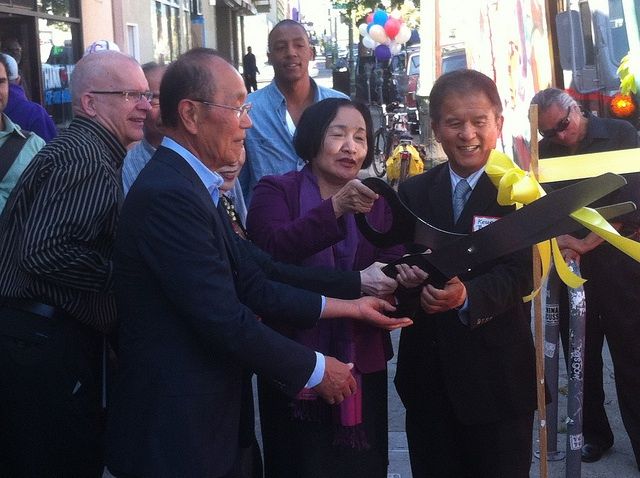
Oakland Mayor Jean Quan (pictured cutting ribbon) got her start in politics as a community activist working to improve
the city’s troubled public schools.
Public opinion has never come back around to Quan’s side, and the prevailing mood over the city’s political direction remains dismal, even as new residents pay ever-higher rents to live there A recent poll commissioned by the Oakland Chamber of Commerce revealed, as the blog Oakland Local put it, “the anger, desperation and scorn that thousands of Oaklanders are feeling about the state of the city.”
A poll of likely voters in the November 2014 election found that citywide, 47 percent of residents feel like Oakland is on the wrong track, while only 27 percent think it’s on the right track. The deepest pessimism comes from District 6, the mostly poor and minority section that includes East Oakland. There, 64 percent of those polled think the city is on the wrong track. Fifty-five percent of respondents feel less safe than they did a year ago, and 69 percent called crime the worst thing about Oakland.
The electorate’s opinion of City Hall is similarly dim. Seventy-five percent think that the city council is doing an “only fair/poor job,” and Quan’s favorability rating is 24 percent, down from 36 percent in 2012. Sixty-two percent view her unfavorably and 77 percent say she is doing an “only fair” or “poor” job. Sixty-nine percent said they would either probably (23 percent) or definitely (46 percent) vote for someone else if the election were today.
Oaklanders surveyed were particularly unified about the need for more resources for public safety, with three-quarters of respondents calling for a larger budget for the police. Today, with just 16.1 officers for every 10,000 residents, the city has one of the lowest staffing levels in the nation. New Orleans, not exactly known for its effective police force, has more than double the number of officers, 32.6, for about 30,000 fewer citizens. Officers must work at least one overtime shift per week to fill patrols.
But the problems with policing in Oakland extend beyond numbers. In 2003, the city reached a negotiated settlement with 119 plaintiffs over a police corruption scandal in which a group of allegedly rogue officers, the Riders, were accused of beating and harassing suspects and planting evidence to support false arrests. A federal judge ordered the city to pay $10.9 million in damages and make reforms to its police department or submit to federal oversight. Nearly a decade later, in January 2012, a federal judge ruled that the city had failed to meet the reform requirements, and an overseer was appointed. Quan, meanwhile, has struggled to maintain strong leadership over the department. Ongoing confusion over how civilians can file complaints about police conduct is one of many indications of the delicate state of affairs.
A poll of likely voters in the November 2014 election found that citywide, 47 percent of residents feel like Oakland is on the wrong track.
In January 2013, the city council, at the mayor’s behest, voted to bring in a team of consultants with experience retooling troubled police departments. The firm of former Los Angeles police chief William Bratton, famed for his development of the CompStat system of quantifying and tracking urban crime, was a controversial hire from the very beginning. Oaklanders were wary of Bratton’s belief in stop-and-frisk tactics and so-called “zero tolerance” policing practices he honed while serving as chief of police under former New York City mayor Rudy Giuliani. Though Quan promised that racial profiling wouldn’t become a part of Oakland police policy, skepticism remained in the city’s activist community.
Bratton said last summer that “there’s potential to fix Oakland’s problems” but “there is no quick fix” for the department. His company’s report faulted the OPD’s top officers for lacking accountability, and recommended that the city be divided into five districts to follow a “neighborhood policing” approach using “district investigative units.” Bratton also called the city’s use of CompStat flawed because the system was not being properly implemented. The way scarce resources have been allocated, the report said, meant that among other problems, “effectively, burglaries are not investigated in the City of Oakland” because one part-time investigator was handling 10,000 burglaries per year.
Quan, who has said she intends to run for a second term, couches the appointment of Bratton as progress. “We have made significant progress, and the momentum has shifted,” she said in October. “But we must do more and we must do it faster.”
At the Holdout, nobody is looking to Quan for leadership, nor is there much hope for reform in the OPD anytime soon. For the crowd attending the trauma-response training, distrust of the police department is deeply ingrained and born of personal experiences. “There have been shootings where I’ve seen cops laughing and drinking coffee next to the bodies,” Thomas says during her presentation.
“We’ve all seen it,” an audience member responds.
“I’m going to be really frank,” Phillips tells me later. “My personal opinion is that Quan is a major disappointment. She comes from a ‘progressive,’ using quotes, background, but her current politics are anything but progressive… Instead of more jail, more policing and more criminalization of youth, we should have more education and more job training.”
“I think she could look to the community of people in Oakland who are trying to bring about change,” Phillips adds, “because there are a lot of us.”
Thomas and Phillips formed People’s Community Medics in 2011 in response to the killing of Oscar Grant, a 22-year-old man who was shot in the back by a member of the BART police while being held face-down on a platform at an Oakland BART station in 2009. For the two women, lifetime residents of nearby East Oakland, the young man’s killing was almost more than they could bear. (Neither wants to see the acclaimed film that tells his story, Fruitvale Station.)
“We discussed it and cried about it and we were raging about it,” Thomas says. “And we decided we wanted to teach our community how to treat seizures and bleeding traumas like gunshot wounds and stabbings.”
This city, polling suggests, is looking for a leader who will come up with some meaningful solutions to the education and crime problems. But who will that person be? A popular parlor game among some Oaklanders is speculating on who among the city’s political class would be willing to risk their career in a run for the top office.
Given Oakland’s stubborn problems and the harsh political spotlight constantly trained on its mayor, its logical to wonder why anyone would want the job.
“I’m going to be really frank. My personal opinion is that Quan is a major disappointment.”
Two serious contenders, both Democrats, have emerged so far. One is Joe Tuman, a political analyst, speechwriter, and professor of political and legal communications at San Francisco State University. Tuman finished fourth in the 2010 race, but is willing to give it another go, so far making public safety a central part of his platform and promising between 300 and 350 new cops on the streets.
The other, Port of Oakland Commissioner Bryan Parker, joined the race this summer. He raised $108,000 in six weeks, much of it through the Crowdtilt crowd-funding platform, and outstripped Quan by $30,000 by August. Parker pitches himself as a next-generation leader who thinks across class and racial lines and presents a positive vision of the city’s future. He also has experienced the toll of violence personally — his sister was murdered in 1998.
“I’m a leader who has been through what this city is going through,” he told a local CBS affiliate. “And that is knowing the pain of this violence… We are not going to tolerate a culture that says it’s OK to kill.” Parker says Oakland is “too important to fail.”
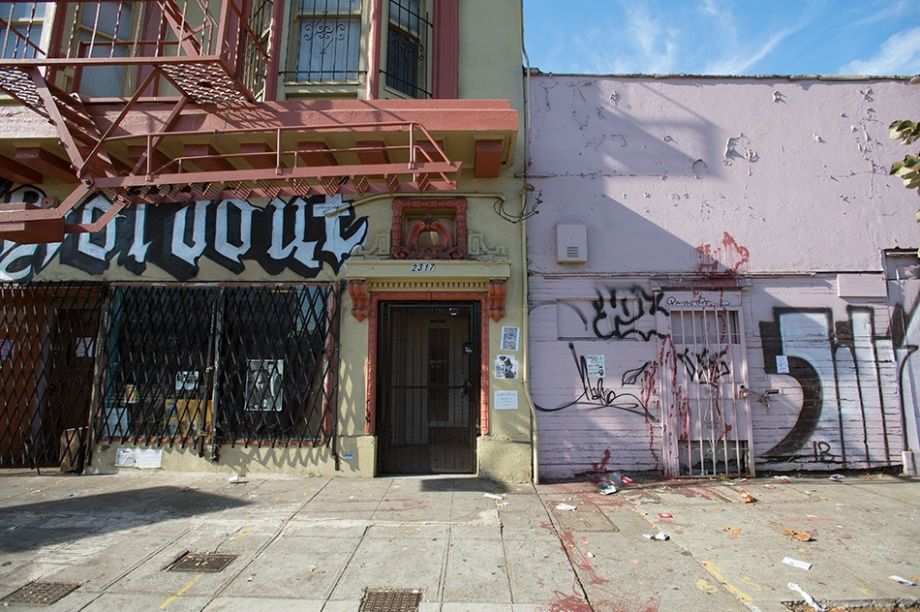
Despite an influx of well-heeled residents and the presence of a few tech companies, all but the most gentrified parts of Oakland struggle with high vacancy rates, crime and unemployment.
He certainly has a point. With housing pressure in San Francisco only increasing, the entire region would benefit from a healthy, functional Oakland. By rights, the East Bay city should be a destination of its own accord.
But Parker is only repeating the same thing others have said for years, and with Election Day still a year out, there’s no real sense of a horse race yet. Many Oaklanders seem cynical and distanced from electoral politics, and others are adopting a wait-and-see attitude. Tervalon-Daumont suggests that voters might end up sticking with Quan out of unwillingness to try yet another new face at city hall. But the mayor’s stunningly low poll numbers suggest that her incumbent status won’t be nearly enough to carry her, and that there is room for someone to come in and pull off the kind of surprise surge at the polls that Bill de Blasio did in New York City this year.
Ramos, who runs the food business, attributes the positive changes she has seen in the past few years to the hard work of Oakland residents, not to its government. “I want to work with other people who want to make this a better place,” she says. “We’re all cousins, we’re all family. The common denominator is that we’re all residents of this place we love called Oakland, and we’re fiercely loyal.”
People’s Community Medics founders Thomas and Phillips are looking ahead to the future as well, but they aren’t putting any stock in the city’s ability to take care of their community.
“We want to work on a whole big scale,” Phillips tells the crowd at the Holdout, echoing the vision of the Black Panther movement a generation ago. “We want to be self-sufficient on every level — educate our children, grow our food — so we don’t have to rely upon the state. That’s a long-term goal.” She smiles. “The short-term goal is to get a van.”
It’s easy to look at Oakland and see the problems. But this city, graced as it is with a pleasant seat on San Francisco Bay, has its most tenacious asset in its diverse and creative residents. Oaklanders like Ramos, Tervalon-Daumont, Phillips and Thomas are proof that the people, in the absence of leadership from above, can still fight for their city from the ground up.
Will Oakland’s grassroots energy propel a more progressive and effective candidate to the fore in 2014, someone willing to take on the big questions of inequity and missed opportunity that city residents grapple with every day? Oaklanders may hope for that kind of leadership, but they are not waiting for a savior.
“We love our people, we love our children,” Thomas says. “That’s why we do what we do. One of our goals is to have our training in schools. If you teach someone how to save a life, they won’t take one.”
Our features are made possible with generous support from The Ford Foundation.
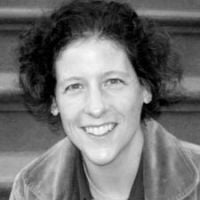
Sarah Goodyear has written about cities for a variety of publications, including CityLab, Grist and Streetsblog. She lives in Brooklyn.
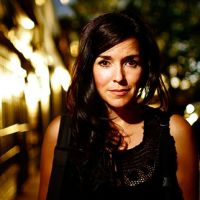
Darcy Padilla is a freelance photographer and documentarian based in San Francisco. Her work has been recognized with numerous awards and fellowships including the W. Eugene Smith Award for Humanistic Photography, John Simon Guggenheim Memorial Foundation Fellowship and the Soros Foundation/Open Society Institute, Individual Fellowship. Her photos have appeared in the Los Angeles Times, the New York Times and many other publications internationally.

20th Anniversary Solutions of the Year magazine